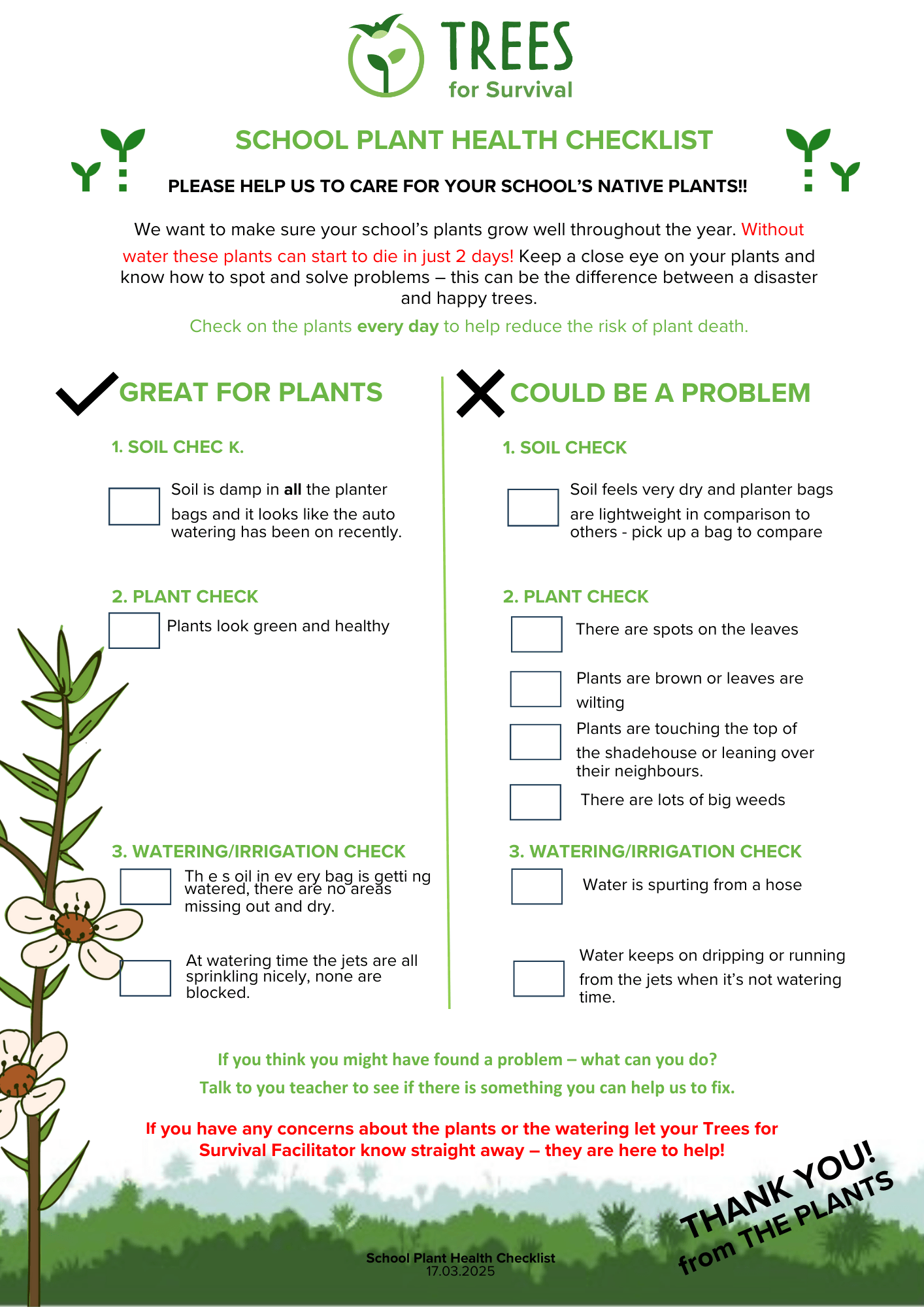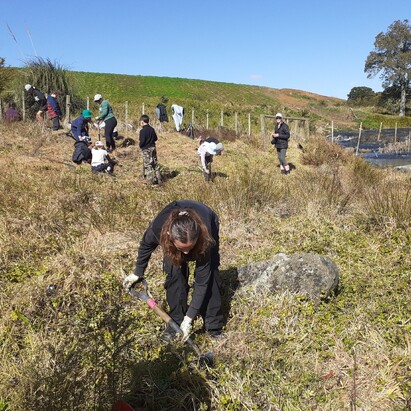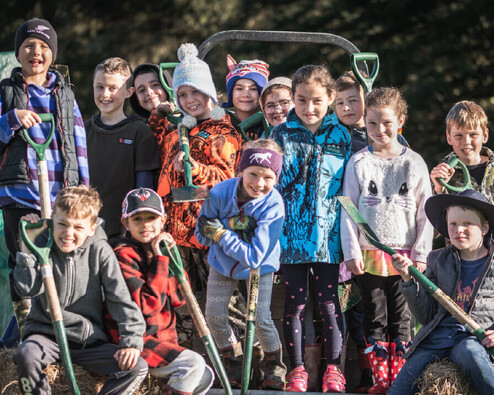
Teacher Resources
Year 4-6 and 7-8 Education Resource available now!
TfS have worked with Core Education to produce a resource for use by teachers for curriculum aligned learning around the resources and opportunities provided by the TfS programme.
We have sent an email to all of our schools sharing a link to this resource - please be in touch if you have not received this.

School Web Badge
Are you a proud Trees for Survival School?
We would love for your school to display our web badge
If you would like to use our web badge on your school website please let us know and we can send this to you info@tfsnz.org.nz
Teacher Resources to Download
We welcome teachers at TfS schools to please download and use the guidelines and checklists to support the Trees for Survival activities such as potting up and planting days.
General
Planting Day
Seedlings
Plant Health Checklist
We want to help our schools engage in the TfS programme throughout the year. Your school can take more responsibility for your plants by encouraging/reminding students (and teachers) to regularly check on your plants!
Our checklist will help you know what you can be checking in the shadehouse; what is great and what could be indication of a problem that your facilitator can help with.
Print and laminate the checklist and make it a regular part of classroom activity.!

Teaching Outcomes
There are two components of the Trees for Survival teaching and learning cycle:
Growing and Planting Native Plants
Growing trees requires ongoing attention – there are lots of opportunities to involve students:
Involve the whole class in potting on.
allocate watering and weeding teams
Make the planting day something to really look forward to.
It is best that the teaching curriculum is completed in one year and a planting day planned annually.
Most regions have small seedlings supplied and are able to grow to a planting out size in one year.
plan to plant a minimum of 800 trees
there are plenty of classroom opportunities including counting and recording / identifying native plants / understanding the complexities of habitats
planting days should take place from May to August (September in the deep south)
Late planting often results in poor outcomes, as the roots have not had sufficient time to establish before the following summer, and the dry autumn weather which often follows.
Focus in the Classroom
Classroom activities will reinforce the themes outlined in the environmental education curriculum
education IN the environment
education ABOUT the environment
education FOR the environment
The key outcomes of the programme emphasises the role of trees in:
controlling erosion
improving stream flow and water quality
habitat creation
biodiversity
reducing carbon emissions
Student benefits include:
knowledge of plant parts
recognition of native tree seedlings and adult species
awareness of the basic requirements for plant growth
acquaintance with risks to healthy plant growth ( insect pests, weeds, fungal attack)
experience in ‘potting up’ seedlings
ability to ‘plant out’ established plants in the field
Resources
Guidelines for Environmental education in New Zealand Schools
Endangered Species - Adopt a Stream
Living with the river teaching information
Wakatipu Reforestation Trust Native Environment themed Colouring In Sheets
Department of Conservation Experiencing native trees in your green space
Thanks for a well organised and inspirational day for our children. It really brought out the best in them and will leave them with lasting memories and thoughts about how to make our community and planet a better place.”
– Deputy Principal, Puni School
What does success look like?
We have a range of criteria to set your school up for success so you enjoy the Trees for Survival programme and your students have a great experience. Here's what we're looking to achieve:
The Trees for Survival programme was integrated into the curriculum
Seedlings were potted on as soon as possible after receiving them
Shade house plants are tended throughout the growing season
Planting day dates were set and shared with your Facilitator and Landowner before the end of March
By May, all plants were a minimum of 30cm and sturdy enough for planting between May-Aug
Your planting day may not go ahead if your plants numbers or size are insufficient
If there were substantial numbers of undersized plants or plant losses the reasons for this would be identified with your Facilitator and a plan put in place to prevent this in future
A successful planting day was held with your community and sponsors.



